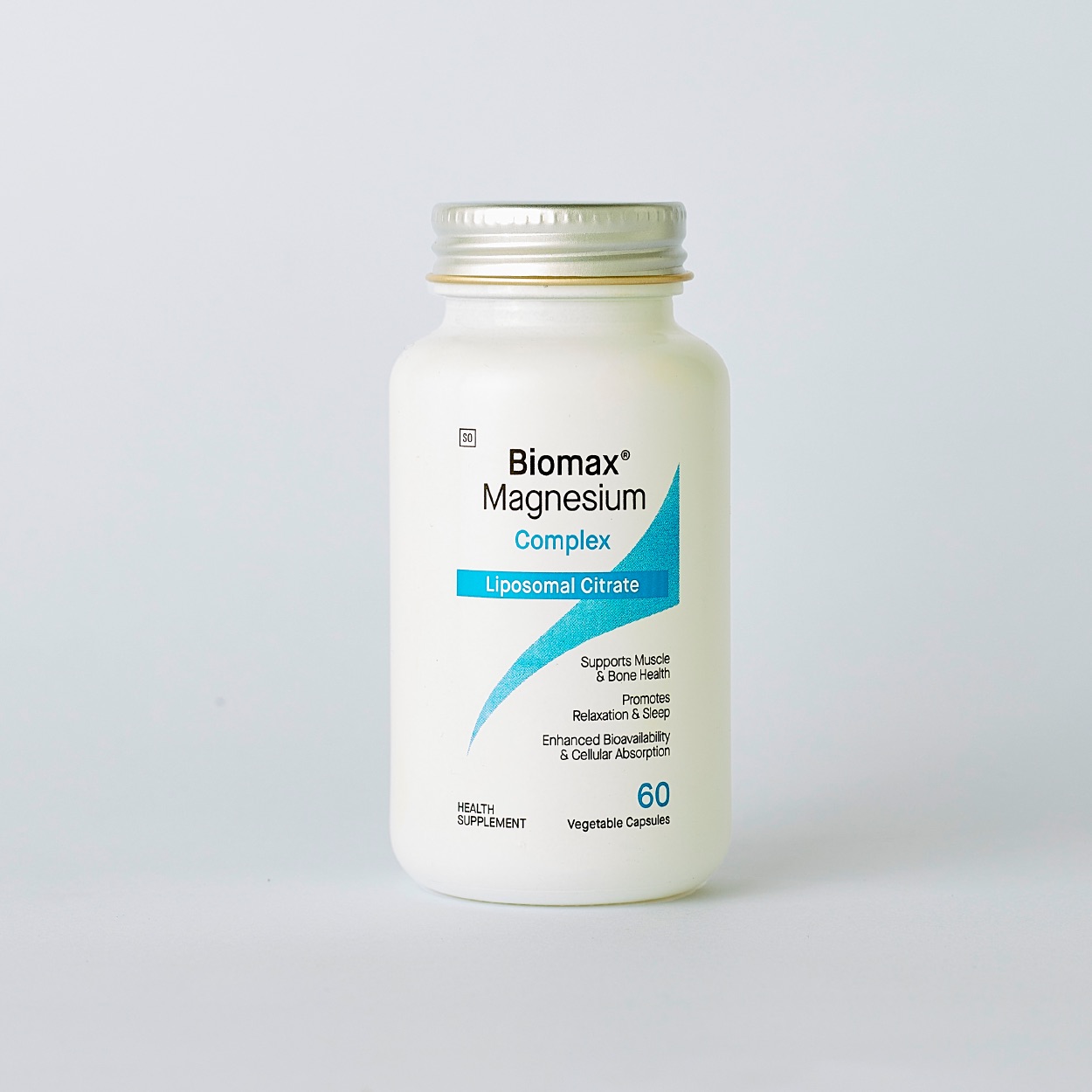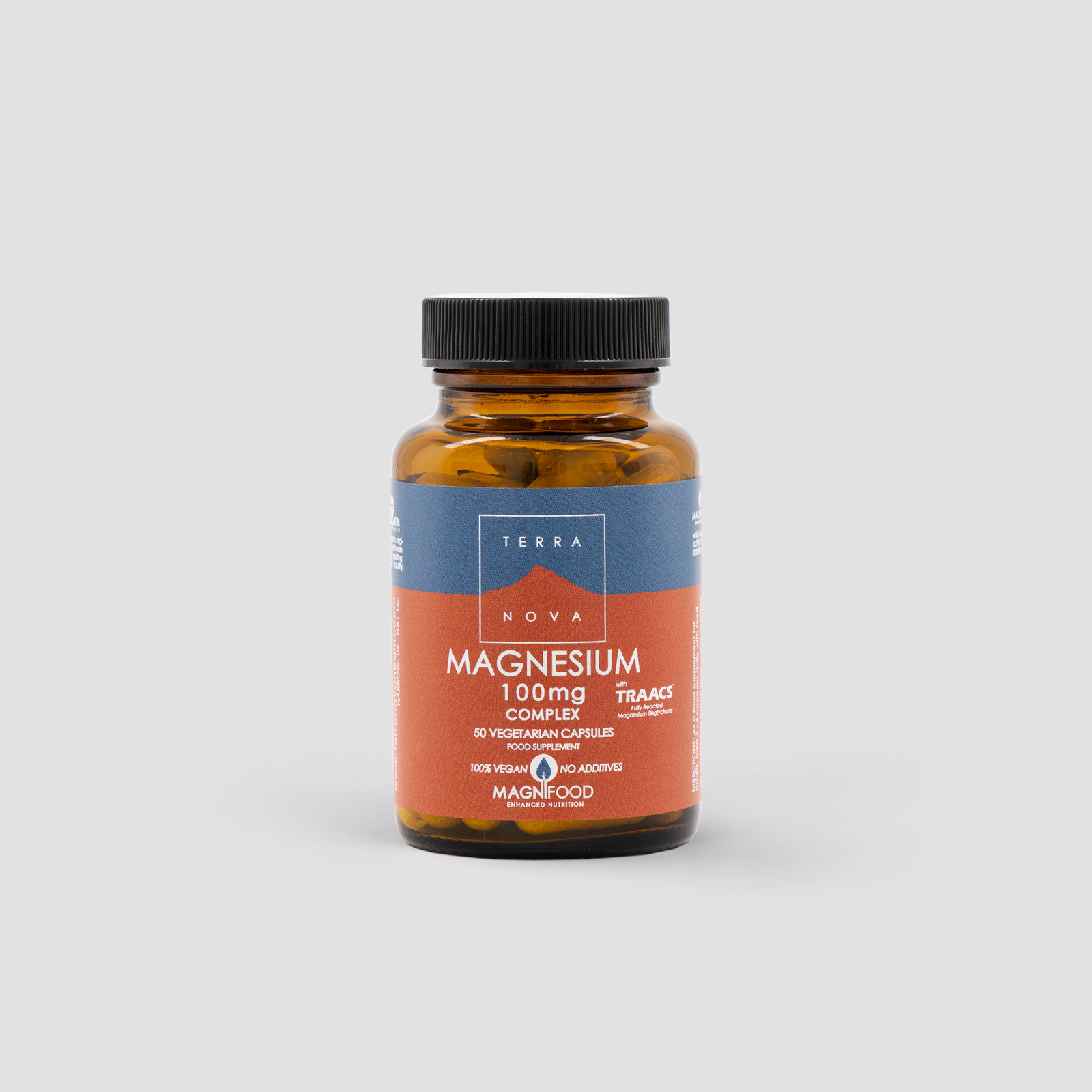While magnesium is naturally present in various foods, supplements provide an additional way to ensure adequate intake. However, not all magnesium supplements are created equal. With multiple forms available, understanding the differences can help you choose the right type for your needs.
Here is a Breakdown of the Different Forms of Magnesium:
Magnesium Oxide
Magnesium oxide is one of the most commonly available and affordable forms of magnesium. Magnesium oxide and other inorganic salts of magnesium, such as magnesium carbonate, contain high levels of elemental magnesium, which refers to the total magnesium content in a supplement.
However, due to their low solubility, these forms have reduced bioavailability, meaning the body absorbs them less efficiently than other magnesium types. While magnesium oxide supplements supply a significant amount of magnesium, they are not the most readily utilised form for bodily functions. This form is widely found in tablet and capsule forms and is commonly used for relieving constipation, indigestion, and migraines [1][8].
Magnesium Citrate
Magnesium citrate is formed by combining magnesium with citric acid. This type is known for its high absorption rate and affordability, making it a preferred option for those looking to boost magnesium intake, and is typically taken to replenish low magnesium levels [2]. Magnesium citrate is a good option for individuals wanting to relieve constipation, as it is an osmotic laxative, meaning that it draws water into the intestine and softens stool, making it easier to pass [3][9]. Magnesium citrate may also support heart health [4] and relieve symptoms associated with stress. [10].
Magnesium Glycinate
Magnesium glycinate is created by bonding magnesium with glycine, an amino acid. This form is highly bioavailable, meaning the body absorbs it well, increasing overall magnesium intake. It is available in capsules, powders, and even gummies, making it a good option for those who have trouble swallowing large pills. Some research suggests that glycine may help have calming properties and support relaxation as well as mood balance, though more studies are needed to confirm its effectiveness for mental health concerns [2].
Magnesium Chloride
Magnesium chloride is a well-absorbed form of magnesium salt that is available in oral supplements as well as topical solutions, such as bath soaks, which are often used for muscle relaxation. When taken orally, magnesium chloride can help support overall magnesium levels in the body [5], which may reduce blood sugar levels [12] and help control blood pressure [13].
Magnesium L-Threonate
Magnesium L-threonate is a relatively new form created by combining magnesium with threonate, a derivative of vitamin C. It is believed to support brain health, memory, and cognitive function. A recent study involving 109 healthy adults aged 18–65 suggests that this form of magnesium may enhance cognitive function, particularly memory. Participants who took two grams of magnesium L-threonate daily for 30 days experienced notable improvements compared to those who received a placebo, with the most pronounced benefits observed in older adults [6].
Magnesium Aspartate
Magnesium aspartate consists of magnesium and aspartic acid, an amino acid. This form is well-absorbed and commonly found in powders and capsules [1]. This medication is a mineral supplement used to prevent and treat low amounts of magnesium in the blood. Some brands are also used to treat symptoms of too much stomach acid such as stomach discomfort, heartburn, and acid indigestion [7]. Magnesium aspartate is thought to be the ‘hearing’ magnesium, as some studies suggest that it supports healthy hearing under conditions of noise stress [14][15].
Magnesium Lactate
Magnesium lactate is a compound of magnesium and lactic acid, which is naturally produced in the muscles. This form is gentle on the stomach and may be better tolerated by individuals who experience digestive discomfort with other types of magnesium [2]. Research suggests it has good bioavailability and causes fewer gastrointestinal side effects than some other forms [16].
Magnesium Sulfate
Magnesium sulfate is commonly known as Epsom salt. It is available in crystalline or powder form and is widely used in baths to ease muscle soreness, promote relaxation and clean minor cuts and bruises [17]. When taken orally, it acts as a laxative for short-term constipation relief. However, ingesting magnesium sulfate should only be done under medical guidance [2].
Magnesium Malate
Magnesium malate is formed by combining magnesium with malic acid, an organic compound found in fruits. Some research suggests it has better absorption compared to other forms, and serum levels remained high for an extended period [18]. Magnesium malate is sometimes suggested for managing symptoms of chronic fatigue syndrome and fibromyalgia, a disorder characterised by musculoskeletal pain and also sleep, memory and mood issues. [19] While some research indicates potential benefits, more high-quality studies are needed to confirm its effectiveness [2].
Magnesium Taurate
Magnesium taurate consists of magnesium and taurine, an amino acid found in meat and fish. Some researchers suggest that this form may contribute to overall heart health, by alleviating cardiovascular protection through restoring hypertension and myocardial antioxidant defence system. The results suggest that MgT (magnesium taurate) can be used as a nutritional supplement to manage cardiovascular complications [20].
Magnesium Orotate
Magnesium orotate is a combination of magnesium and acid, a compound involved in DNA and RNA synthesis. Preliminary research indicates that magnesium orotate may support heart health, as orotic acid plays a key role in energy production within the heart and blood vessel tissues. Because of this, it is favoured by athletes and fitness enthusiasts, though it may also benefit individuals with heart conditions [2]. A 2009 study involving 79 people with severe congestive heart failure found that magnesium orotate supplementation was significantly more effective than a placebo in improving symptoms and the patients’ quality of life [21].
How to Choose the Right Magnesium for You
As illustrated above, magnesium supplements come in various forms, each with its own unique properties and benefits. While some types are better suited for digestion and muscle relaxation, others may support cognitive function or cardiovascular health. Choosing the right form depends on your specific health goals and how your body responds to different types of magnesium. If you are unsure which type is best for you, consulting a healthcare professional can help guide your decision.
Dietary Sources of Magnesium
Several nutrient-dense foods provide a significant amount of magnesium. Roasted pumpkin seeds are particularly rich, offering 156 mg per ounce, which accounts for 37% of the daily value (DV). Chia seeds follow with 111 mg per ounce (26% DV), while dry-roasted almonds contain 80 mg per ounce (19% DV). Boiled spinach provides 78 mg per half-cup, also contributing 19% of the DV. Dry-roasted cashews deliver 74 mg per ounce (18% DV), and oil-roasted peanuts offer 63 mg per quarter-cup (15% DV). Additionally, a cup of soy milk contains 61 mg (15% DV), and half a cup of cooked black beans supplies 60 mg (14% DV), making these excellent dietary sources of magnesium [22].
Choosing the right magnesium supplement can make a real difference in how effectively your body absorbs and uses this essential mineral. With so many options on the market, it’s not just about taking magnesium – it’s about taking the right kind for your body’s needs. Whether you’re looking to improve energy, ease muscle tension, or support overall well-being, a well-chosen magnesium supplement can be a simple but powerful step toward better health.
Always consult with a healthcare practitioner before starting a new supplement regime.





